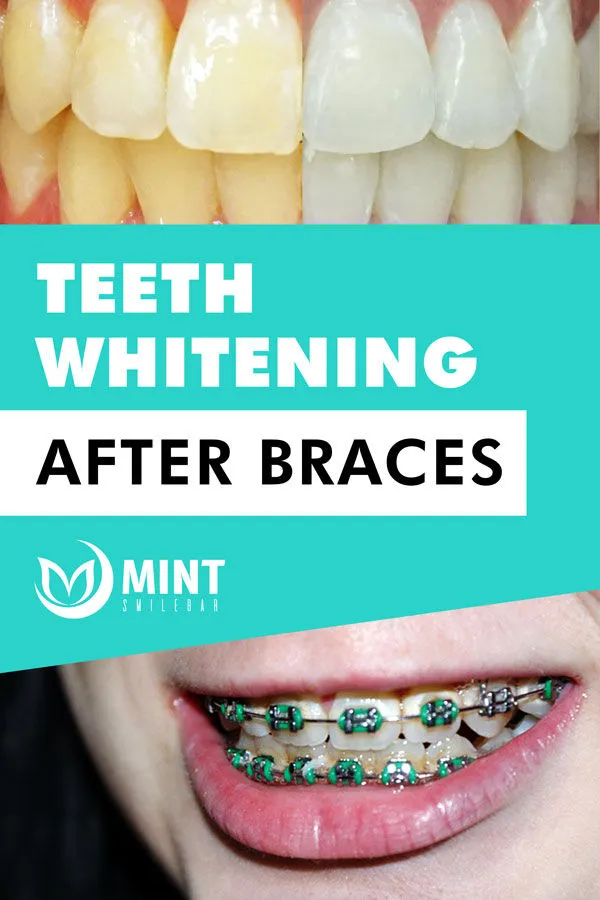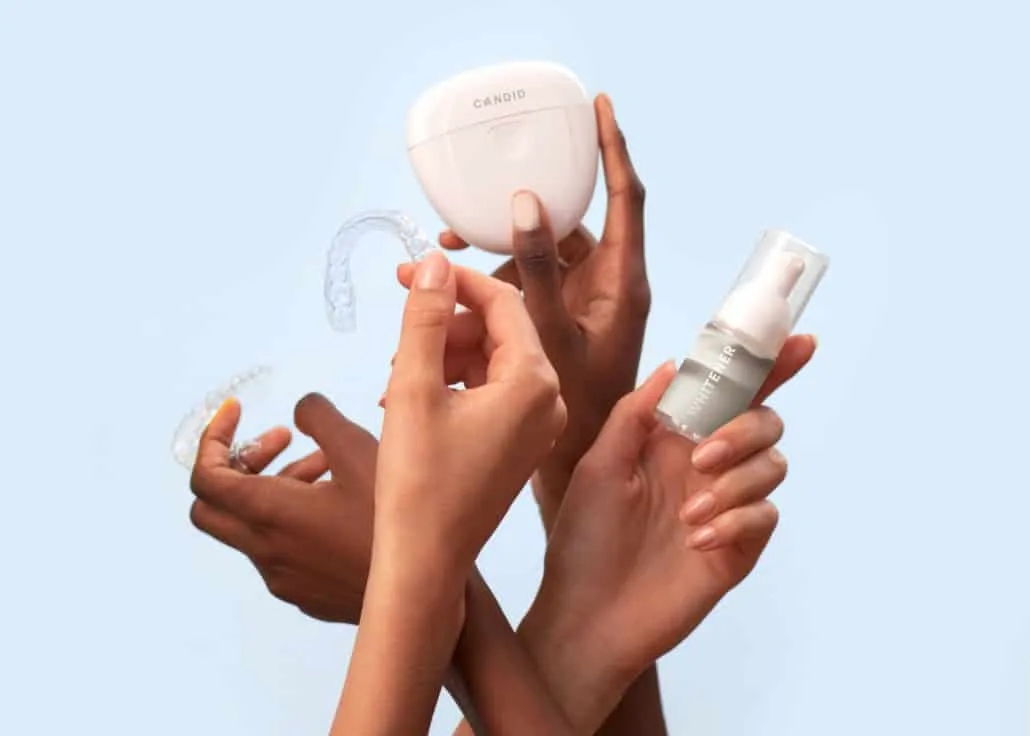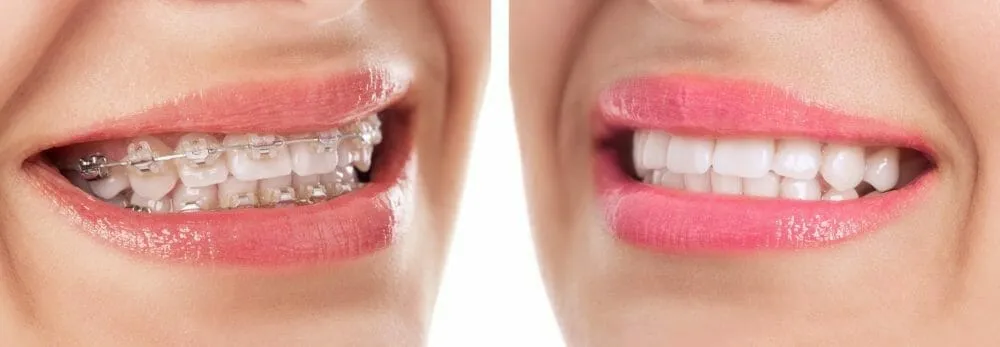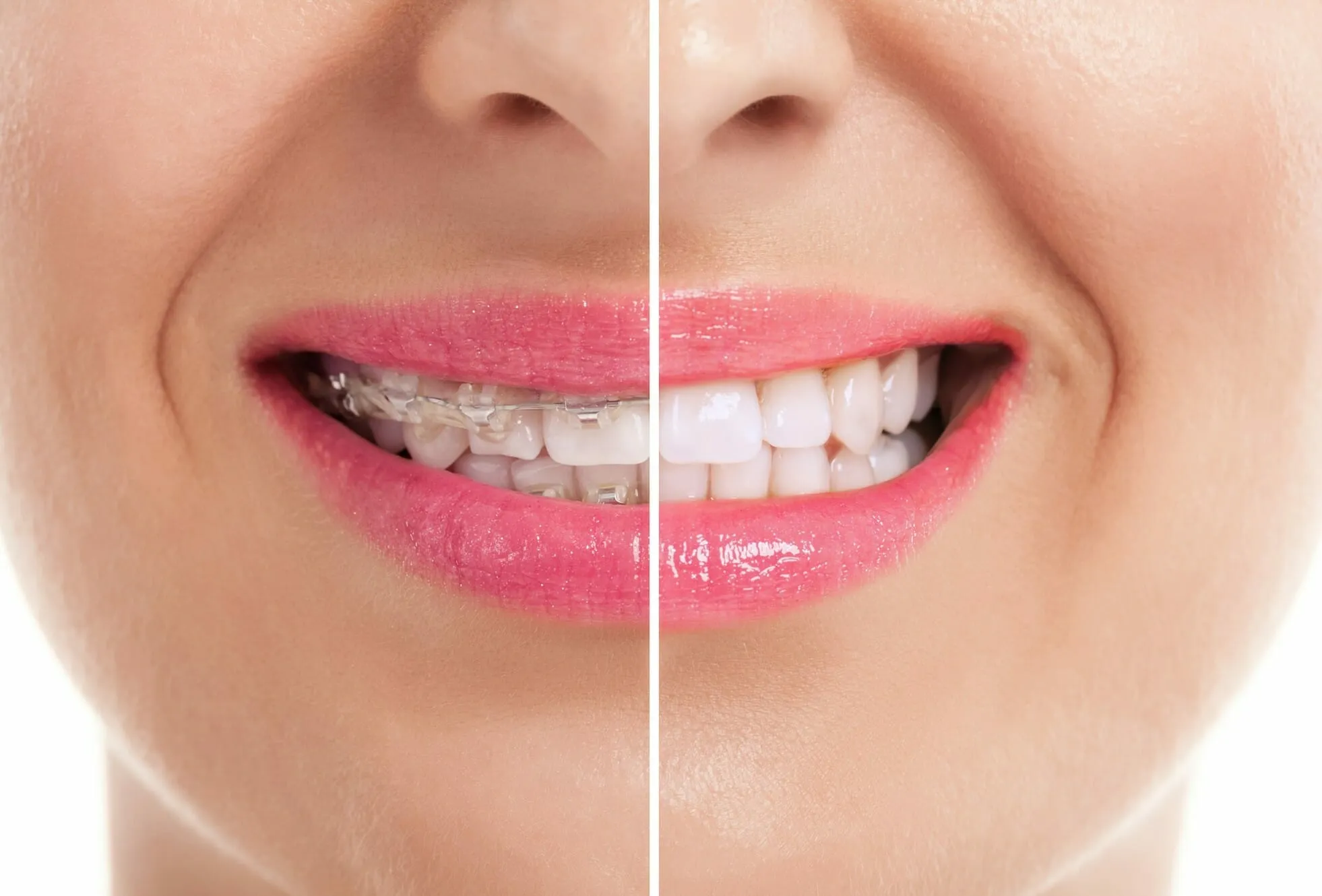Achieving a perfect smile is a significant goal for many, and braces are often a crucial step in that journey. However, after the braces come off, you might notice an unwelcome surprise: stains on your teeth. These stains, often appearing as white or yellow spots, can be disheartening after investing time and effort in orthodontic treatment. Fortunately, there are effective ways to address these stains and restore your bright, confident smile. This article will guide you through the common causes of staining after braces and provide you with five essential tips for successful teeth whitening.
Why Teeth Staining Happens After Braces
Understanding the reasons behind teeth staining after braces is the first step toward effective treatment. The most prevalent cause is the accumulation of plaque and tartar around the brackets and wires. These areas are challenging to clean thoroughly, even with diligent brushing, leading to the demineralization of enamel and the formation of white spot lesions. The prolonged contact of the teeth with the bonding adhesive used to attach the brackets can also contribute to staining. Furthermore, dietary habits, such as consuming highly pigmented foods and drinks (coffee, tea, red wine), can exacerbate the problem, as these substances can seep into the porous enamel and cause discoloration. Recognizing these factors highlights the importance of preventative measures and post-braces care.
Understanding the Impact of Braces on Teeth
Braces, while effective in straightening teeth, can significantly affect oral hygiene. The brackets and wires create numerous hard-to-reach areas where bacteria and food particles can accumulate. This environment promotes plaque buildup, which, if not properly addressed, leads to enamel demineralization and the formation of white spot lesions, which appear as stains. Additionally, the process of applying and removing the bonding adhesive can sometimes compromise the enamel’s integrity, making it more susceptible to staining. Patients must maintain meticulous oral hygiene throughout the braces treatment and adopt a comprehensive aftercare plan to mitigate these effects and maintain a healthy, stain-free smile.
Common Causes of Teeth Staining After Braces

Several factors contribute to the staining of teeth after braces. Poor oral hygiene is the primary culprit. Inadequate brushing and flossing allow plaque to accumulate around the brackets, leading to demineralization and the formation of white spot lesions. Dietary habits also play a crucial role. Frequent consumption of staining foods and drinks, such as coffee, tea, and dark-colored berries, can accelerate the discoloration process. Furthermore, the type of bonding adhesive used during the braces treatment can impact the appearance of stains; some adhesives are more prone to causing discoloration. Genetics, too, can influence how susceptible teeth are to staining. Understanding these common causes is essential for implementing effective prevention and treatment strategies.
Top 5 Teeth Whitening Tips After Braces
Now, let’s dive into the top five tips for teeth whitening after braces, helping you achieve a brighter, more confident smile. These tips combine professional treatments with at-home care, providing a comprehensive approach to address stains and discoloration. Remember that consistency and patience are critical, and consulting with your dentist is vital to ensure the best results.
Tip 1 Professional Teeth Cleaning
A professional teeth cleaning is the initial and arguably most crucial step in the teeth whitening process. A dental hygienist can remove plaque, tartar, and surface stains that at-home brushing and flossing may miss. This cleaning provides a clean slate, allowing whitening treatments to work more effectively. Moreover, the hygienist can assess the overall health of your gums and teeth, identifying any underlying issues that need attention before whitening. This professional cleaning often includes polishing, which further brightens the teeth and prepares them for whitening treatments.
Benefits of Professional Cleaning

The advantages of professional teeth cleaning extend beyond just cosmetic improvements. Regular cleanings help prevent gum disease, tooth decay, and other oral health issues. The hygienist can detect early signs of problems, such as cavities or gum inflammation, and provide timely treatment. Professional cleaning also removes stubborn stains and build-up, making your teeth feel cleaner and fresher. Furthermore, it helps maintain healthy enamel and ensures the best possible results from subsequent whitening treatments. Incorporating regular professional cleanings is vital for maintaining optimal oral health and a beautiful smile.
Tip 2 Choose the Right Whitening Method
Choosing the right whitening method is essential for achieving the desired results. Various options are available, ranging from at-home treatments to in-office procedures. Each method has advantages and disadvantages, so it is crucial to consult with your dentist to determine which option suits your needs best. Consider factors like the severity of the stains, your sensitivity level, and your budget when making your decision. Some popular options include whitening toothpaste, over-the-counter whitening strips, custom-fitted whitening trays, and professional in-office bleaching.
Options like Whitening Toothpaste, Strips, and Trays
Several at-home whitening options are available, providing varying degrees of effectiveness. Whitening toothpaste can help remove surface stains, but it usually does not significantly alter the underlying tooth color. Over-the-counter whitening strips are convenient and relatively affordable, containing a lower concentration of bleaching agents. Custom-fitted whitening trays, provided by your dentist, offer a more potent whitening solution as they allow the bleaching gel to contact the teeth more effectively. These trays are typically used with a prescription-strength whitening gel. The choice among these options depends on the severity of the stains and your desired level of whitening. It is always best to consult your dentist before using any whitening product.
Tip 3 Dietary Adjustments to Maintain Brightness

Your diet plays a significant role in the longevity of your teeth whitening results. Certain foods and drinks can stain your teeth, undoing the progress you’ve made. Adopting a tooth-friendly diet is essential to maintain a bright smile. This involves reducing or avoiding highly pigmented items such as coffee, tea, red wine, berries, and soy sauce. Consider rinsing your mouth with water after consuming potentially staining foods and drinks. Additionally, incorporating foods that naturally clean your teeth, like apples and celery, can help remove surface stains. Mindful eating habits can help you preserve your bright smile for longer.
Foods and Drinks to Avoid
To protect your teeth whitening results, it’s important to know which foods and drinks to avoid. Dark-colored beverages like coffee, tea, and red wine are notorious for staining teeth. Similarly, deeply pigmented foods such as berries, soy sauce, and curries can contribute to discoloration. The acidic nature of certain foods, such as citrus fruits, can also erode enamel, making teeth more susceptible to staining. Limiting or avoiding these items can significantly help maintain your white smile. If you do consume staining foods or drinks, try to rinse your mouth with water afterward to minimize their impact.
Tip 4 Proper Oral Hygiene Routine
Establishing a robust oral hygiene routine is essential for preventing stains and maintaining a bright smile. This includes brushing your teeth at least twice a day with fluoride toothpaste. Use a soft-bristled toothbrush and brush gently in circular motions to avoid damaging your enamel. Flossing daily is also crucial to remove plaque and food particles from between your teeth and along the gum line, where brushing can’t reach. Consider using an antimicrobial mouthwash to further reduce bacteria and protect your teeth. Consistency is key – a disciplined oral hygiene routine can help prevent new stains and keep your teeth looking their best.
Brushing and Flossing Techniques

Proper brushing and flossing techniques are key components of maintaining a healthy, stain-free smile. When brushing, hold your toothbrush at a 45-degree angle to your gums and brush in gentle, circular motions, covering all surfaces of your teeth. Be sure to brush for two minutes each time. Flossing should follow brushing, using a gentle back-and-forth motion to clean between your teeth and along the gum line. Reach the back teeth to eliminate food and plaque build-up. You can also use an interdental brush or water flosser to improve cleaning in hard-to-reach areas. These techniques, when applied consistently, are powerful tools in the fight against stains and promote oral health.
Tip 5 Consult Your Dentist
Consulting your dentist is the most crucial step for addressing teeth staining and whitening after braces. A dentist can assess the cause and severity of your staining, recommend appropriate treatments, and provide professional cleanings and whitening procedures. They can also offer personalized advice based on your unique oral health needs and preferences. Regular dental check-ups allow your dentist to monitor your progress and address any underlying dental issues. It is important to discuss your goals with your dentist to create a tailored treatment plan and achieve the best possible outcome. Professional guidance ensures you safely and effectively achieve a brighter smile.
When to Seek Professional Advice
Seeking professional advice from your dentist is necessary in various scenarios. If you notice significant staining or discoloration, scheduling an appointment is essential. If at-home whitening treatments do not yield the desired results, it’s time to consult your dentist. They can recommend more potent professional whitening options. If you experience tooth sensitivity or gum irritation during at-home treatments, it is crucial to seek professional guidance to prevent further damage. Moreover, anyone with pre-existing dental conditions, such as cavities or gum disease, should consult their dentist before whitening. Regular professional check-ups ensure a healthy, bright smile and enable you to avoid potential complications.
Maintaining Your White Smile After Braces

Maintaining a bright smile after braces requires consistent effort and a proactive approach. Continue practicing excellent oral hygiene by brushing and flossing regularly. Avoid staining foods and drinks as much as possible, or rinse your mouth with water after consumption. Schedule regular dental check-ups and professional cleanings to maintain your results and address any potential issues. Consider touch-up whitening treatments as needed, but always consult with your dentist. Remember that a healthy lifestyle, including a balanced diet and avoiding tobacco, also impacts your smile. By following these strategies, you can enjoy a vibrant, confident smile for years to come.
In conclusion, getting rid of stains after braces involves a combination of professional treatments and diligent at-home care. By understanding the causes of staining, following the top five teeth-whitening tips, and maintaining a proactive approach, you can restore your bright, confident smile. Regular dental check-ups, proper oral hygiene, and mindful dietary choices will help you sustain your beautiful results. Embrace these strategies, and you’ll be well on your way to flaunting a radiant smile you’ll be proud to show off.
